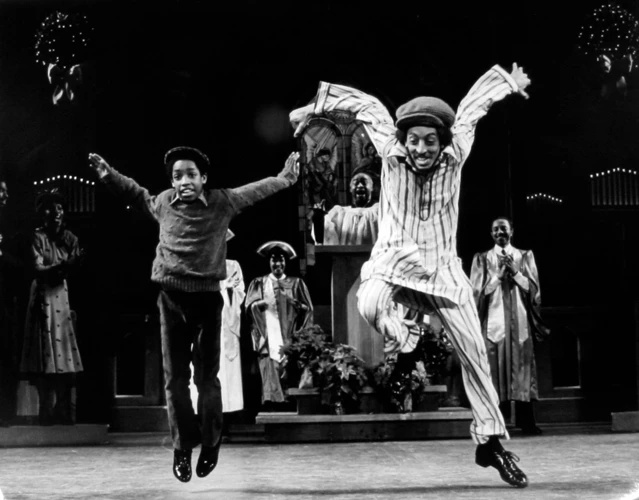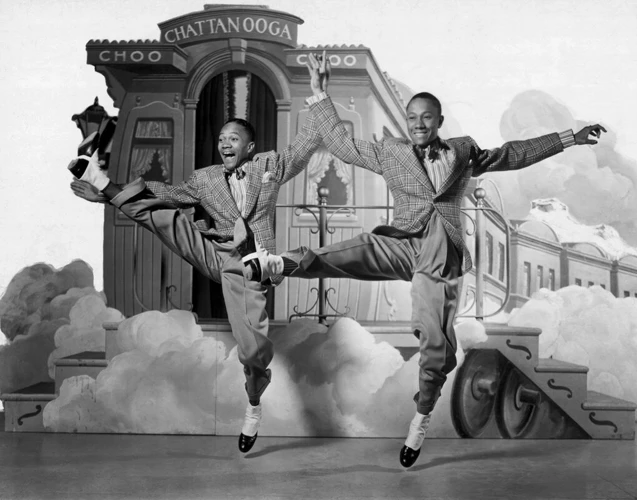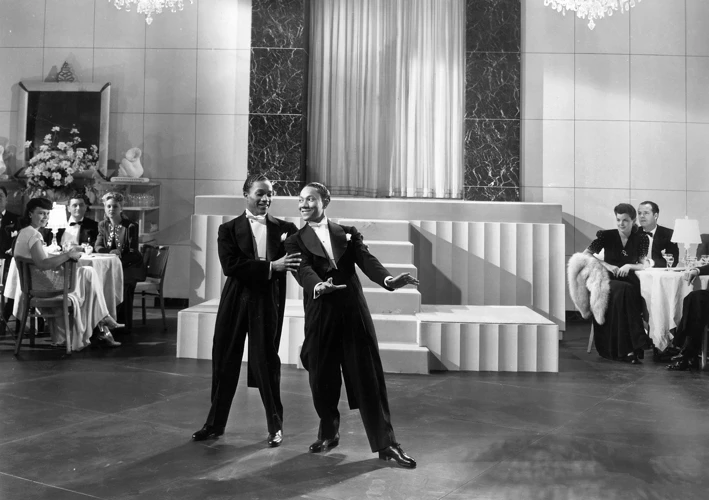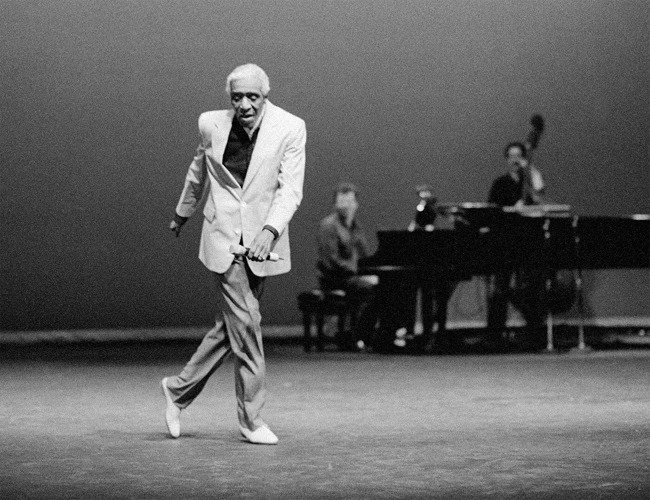Tap dance is a uniquely American dance form that has undergone a rich and fascinating evolution over the years. From its humble origins on plantations in the South to its modern-day manifestations in the form of contemporary tap dance companies, the history and origins of tap dance is a story rife with cultural influences, social commentary, and artistic innovation. As we dive deeper into the roots and evolution of this beloved dance form, we’ll uncover the techniques, performers, and cultural moments that have shaped tap dance into the dynamic and mesmerizing art form it is today.
The Roots of Tap Dance

The history of tap dance is a long and complex journey, with many cultural influences and artistic contributions. To fully understand the dance, it’s important to look at the roots of tap, and how it evolved into the vibrant and rhythmic art form it is today. From African drums to American soil, tap dance is a fusion of cultures and styles, adapted and influenced by various groups along the way. The origins of this unique form of dance hold many fascinating stories and milestones, which have helped shape it into the diverse and captivating genre it is today. Let’s take a closer look at the roots of tap and how it all began.
African Drums to American Soil
Tap dance has a rich history that dates back to the early days of African American culture. The roots of tap dance can be traced back to the African drumming traditions that were brought over to America through the slave trade. The rhythms of the drums began to influence the way that African Americans moved and danced. Over time, these rhythms were incorporated into various dance forms, including tap dance.
Table: African Drumming Traditions Influencing Tap Dance
| African Drumming Traditions | Influence on Tap Dance |
|---|---|
| West African drumming | The use of polyrhythms and syncopated rhythms influenced the percussive nature of tap dance |
| Juba dance | Carried over from West African slaves, the dance involved slapping and patting parts of the body to create rhythms – which later found their way into tap dance |
| Ring shout | A religious dance tradition that involved shuffling, stomping and clapping – which influenced the footwork in tap dance |
As African Americans began to incorporate elements of their cultural heritage into their dance styles, tap dance began to evolve. It was not until the early 1900s that tap dance became a recognized art form, with distinct styles and techniques.
Today, tap dance remains a popular dance form that continues to evolve and change. There are many different tap styles that have emerged over the years, each with its own unique approach to rhythm and movement. From Broadway to Hollywood, tap dance has made its mark on the world of entertainment and continues to captivate audiences with its lively rhythms and intricate footwork.
If you want to learn more about tap dance culture or improve your tap dance technique, there are many resources available online. Check out some of the following links for more information:
1. Famous tap dancers
2. Different tap styles
3. Improving tap dance technique
4. Importance of rhythm in tap dance
5. Right tap shoes guide
6. Benefits of tap dance
7. Tap dance exercise
8. Tap dance and its incorporation in musical theatre
Early Tap Dance: 1600s-1800s

When exploring the history of tap dance, one can trace its roots back to the African slave trade and the fusion of African and European dance styles in America. Tap dance as we know it today, with its intricate footwork and unique rhythm, evolved over time from a variety of dance forms. In this section of the article, we will delve into the early days of tap dance from the 1600s to the 1800s. We will examine the influence of African drums on American soil, the development of jigs and clogs, and how minstrelsy and vaudeville helped shape the art form. If you are interested in learning more about tap dance, be sure to check out our right tap shoes guide or our section on tap dance culture.
Jigs and Clogs
During the 1600s-1800s, tap dance was primarily developed from European (particularly Irish and English) step dance forms, such as jigs and clogs. These dances were brought to America by immigrants and eventually grew to incorporate African rhythms and styles.
Jigs often featured quick footwork and complex rhythms, and were predominantly performed by men. On the other hand, clogs were performed by both men and women and incorporated wooden-soled shoes, which added a percussive element to the dancers’ steps. The syncopated rhythms and footwork of these dances laid the foundation for tap dance as we know it today.
As tap dance evolved and African influences were incorporated, tap dancers began to experiment with different rhythms and accents. Dancers would often use improvisation to weave individual styles into their performances. Tap dance became a fusion of various dance styles with a unique American twist.
Table: Jigs and Clogs
| Dance Form | Origin | Characteristics | Gender |
|---|---|---|---|
| Jig | Ireland | Quick footwork, complex rhythms | Primarily men |
| Clog | England | Wooden-soled shoes, percussive element | Both men and women |
Jigs and clogs played a significant role in the development of tap dance as a distinct art form. Their impact on early tap dance techniques and rhythms is evident in the dancing styles of the early 1900s. The incorporation of African rhythms and styles further expanded the possibilities for tap dance and paved the way for the emergence of new dance forms that continue to inspire and captivate audiences today.
Minstrelsy and Vaudeville
During the 1600s and 1700s, tap dance began to take shape as African slaves were brought to America. Through the years of slavery, music and dance became a way for enslaved Africans to express their culture and traditions.
As slavery came to an end in the 1800s, African Americans began to explore their passion for dance on a larger scale. Tap dance took root in the minstrel shows and vaudeville performances of the time.
Minstrelsy was a popular form of entertainment during the mid-1800s. It featured white performers in blackface, performing comedic skits and music that mocked black culture. However, African American performers eventually began to break into the industry, using tap dance to showcase their talent and culture.
Vaudeville shows became popular in the late 1800s and early 1900s, and they provided an opportunity for African American performers to showcase their talents to a wider audience. These shows often featured “colored only” acts, which allowed African Americans to perform without having to wear blackface. Tap dance became a staple of vaudeville performances, and many African American performers were able to carve out successful careers in the industry.
Despite the opportunities that minstrelsy and vaudeville provided, they were still limited by racism and segregation. African American performers were often relegated to segregated theaters and were paid less than their white counterparts. However, their talent and perseverance helped lay the foundation for tap dance to thrive in the decades to come.
Tap Dance in the Jazz Age: 1920s-1930s

As the 1920s rolled in, America was experiencing a cultural explosion in music and dance, with the rise of jazz and swing. And in the midst of this colorful era emerged a new style of tap dance that would come to dominate the stage and screen. This style was characterized by its lively rhythm and intricate footwork, and it became a popular form of entertainment for audiences across the country. So, let’s explore the vibrant history of tap dance in the Jazz Age and how it evolved into the art form we know and love today.
The Cotton Club and Musical Theater
During the 1920s and 1930s, tap dance began to take on a more prominent role in musical theater and nightlife entertainment. One of the most famous venues where tap dance flourished during this era was the Cotton Club in New York City.
The Cotton Club was a popular nightclub that primarily featured African American musicians and dancers. The club gained notoriety for its extravagant shows and energetic dance numbers, which often incorporated elements of tap dance. Performers such as Bill “Bojangles” Robinson, Cab Calloway, and Duke Ellington all made appearances at the Cotton Club.
In addition to the Cotton Club, tap dance also became a staple in musical theater productions during this time period. Shows such as George Gershwin’s “Lady Be Good” and Cole Porter’s “Anything Goes” featured intricate tap dance routines and led to the popularization of tap dance as a theatrical art form.
Tap dance also continued to be a popular form of entertainment in vaudeville shows during this time period. Vaudeville was a form of variety entertainment that included everything from comedy sketches and music performances to acrobatics and dance routines. Tap dance routines quickly became a fan favorite and helped to propel the art form into the mainstream.
The Cotton Club and musical theater played a significant role in the development and popularization of tap dance during the Jazz Age. The success of these venues helped to establish tap dance as a major component of American entertainment culture.
Bill “Bojangles” Robinson and the Nicholas Brothers
During the 1920s and 1930s, Bill “Bojangles” Robinson and The Nicholas Brothers became some of the most prominent figures in tap dance.
Bill “Bojangles” Robinson, born in Richmond, Virginia in 1878, was often considered the greatest tap dancer of his time. He began performing at a young age and quickly gained fame for his intricate footwork and smooth style. Robinson was one of the first African American performers to break through the color barriers of his time and achieve success among both black and white audiences.
Robinson’s most famous routine was his “stair dance,” in which he danced up and down a flight of stairs with such ease and grace that it became a signature performance in his career. He went on to star in many films and became the highest-paid black performer of his time.
The Nicholas Brothers, made up of Fayard and Harold Nicholas, were a brother duo who added acrobatic elements to their tap dance routines. Born in North Carolina in the 1910s, they began performing at a young age and quickly gained recognition for their incredible talent.
The Nicholas Brothers became famous for their high-energy performances and complex choreography. The duo often included impressive jumps and splits in their routines, and they would sometimes incorporate acrobatics such as cartwheels or backflips into their performances.
They gained national attention after performing in musical films such as “Stormy Weather” and “Sun Valley Serenade.” Their talent and energy influenced many future tap dancers and their legacy continues to inspire new generations of performers.
The contributions of Bill “Bojangles” Robinson and The Nicholas Brothers played a significant role in the development of tap dance as both an art form and a means of breaking through racial barriers in the entertainment industry.
Musical Films and the Golden Age of Tap Dance: 1930s-1950s

As the art of tap dance continued to evolve and gain popularity, the 1930s to 1950s marked a particularly golden era for the genre. With the introduction of sound in film, musicals became a favored form of entertainment and tap dance found its way onto the big screen. The rhythm and energy of tap dance captivated audiences and dancers alike, leading to iconic performances by legendary tap dancers. Let’s explore this electrifying era of tap dance in-depth.
The Nicholas Brothers and Fred Astaire
In the Golden Age of Tap Dance, two legendary performers stood out as pioneers of the craft: The Nicholas Brothers and Fred Astaire. Both known for their virtuosic footwork and smooth style, they left indelible marks on the history of tap dance.
The Nicholas Brothers were a tap dancing duo consisting of Harold and Fayard Nicholas. Born in 1914 and 1918 respectively, the brothers were part of a large family of musicians and dancers. They began performing at a young age and quickly gained recognition for their incredible talent. In the 1930s, they became stars of the Harlem nightclub scene and were eventually recruited by Hollywood studios to perform in films on the West Coast.
One of their most famous performances was in the 1943 musical film, “Stormy Weather”. In the film, the brothers performed an unforgettable routine that included high-flying splits and jumps down a flight of stairs. This scene is now considered one of the greatest dance sequences in film history and cemented the brothers’ status as tap dance icons.
Fred Astaire, meanwhile, was a solo dancer who rose to fame in the 1930s. He began his career on Broadway and eventually moved to Hollywood to star in musical films. Astaire was known for his elegance and grace, as well as his unmatched skill as a tap dancer.
Astaire’s signature style was showcased in numerous films, including “Top Hat” and “Swing Time”. He often collaborated with choreographer Hermes Pan to create intricate tap dance routines that blended together elements of ballet and jazz. Astaire’s legacy as a tap dancer is still felt today, and he continues to inspire new generations of dancers.
Together, The Nicholas Brothers and Fred Astaire represented the pinnacle of tap dance during the Golden Age of Hollywood. Their performances continue to captivate audiences and demonstrate the incredible artistry and beauty of this dynamic dance tradition.
Eleanor Powell and Ann Miller
During the Golden Age of Tap Dance in the 1930s-1950s, two female dancers who stood out were Eleanor Powell and Ann Miller. Both dancers were known for their incredible athleticism and technical skill.
Eleanor Powell began her career as a chorus girl but quickly rose to fame with her tap dancing abilities. She appeared in several musical films, including “Broadway Melody of 1936” and “Born to Dance”. Powell’s style was characterized by her precision and speed, as well as her ability to seamlessly incorporate ballet movements into her tap routines.
Ann Miller, on the other hand, had a more varied background in dance, including training in both tap and ballet. She appeared in numerous musical films throughout her career, including “On the Town” and “Kiss Me Kate”. Miller was known for her flashy costumes and high-energy performances, which often included intricate footwork and acrobatic stunts.
Both Powell and Miller were trailblazers in the world of tap dance, proving that women could be just as skilled and entertaining as their male counterparts. Their influence extended beyond their own careers and helped pave the way for future female tap dancers.
Despite facing gender inequality and societal barriers, Powell and Miller proved that tap dance was not just a male-dominated art form. They demonstrated that tap dance had the power to transcend gender and race, and that anyone with enough dedication and talent could succeed.
The Modern Era and Beyond
As time progressed, so did the art of tap dance. The modern era of tap dance has brought about new innovations and styles, challenging the boundaries of dance as we know it. The influence of legendary performers and choreographers such as Savion Glover and Gregory Hines can still be seen in tap dance today. Additionally, contemporary tap dance companies have emerged, providing a platform for new and diverse voices to showcase their talent. Let’s explore the evolution of tap dance in the modern era and beyond.
Savion Glover and Gregory Hines
Two of the most influential figures in modern tap dance are Savion Glover and Gregory Hines. Both of these legends started tap dancing at a young age and quickly became known for their incredible talent and innovative style.
Savion Glover was born in Newark, New Jersey in 1973. He began tap dancing at the age of seven and quickly gained recognition for his unique approach to the art form. Glover’s style is heavily influenced by jazz music, and he is known for his fast footwork and complex rhythms. In 1996, Glover made his Broadway debut in the musical “Bring in ‘da Noise, Bring in ‘da Funk,” which he also choreographed. The show won four Tony Awards, including Best Choreography for Glover. He has since continued to be a leading figure in the tap dance world, choreographing and performing in numerous productions around the world.
Gregory Hines was born in New York City in 1946 and was part of a famous family of performers. He began tap dancing at the age of two and quickly became known for his incredible skill and charisma. Hines appeared in numerous movies and television shows throughout his career, but he is perhaps best known for his work on Broadway. He won a Tony Award for his performance in the musical “Jelly’s Last Jam” and was nominated for several others. Hines was also a vocal advocate for the preservation and advancement of tap dance, and he worked tirelessly to ensure that it remained an important part of American culture until his death in 2003.
These two legends of tap dance have inspired countless dancers and choreographers around the world, and their influence can still be seen in the work of many contemporary tap dancers today. Their dedication to the art form and their commitment to innovation have ensured that tap dance remains a vibrant and important part of American culture.
Contemporary Tap Dance Companies
Tap dance has continued to evolve and thrive in contemporary times thanks to the efforts of many talented artists and companies. Here are some prominent contemporary tap dance companies that are keeping the art form alive:
- Syncopated Ladies: This all-female company was founded by Emmy Award-nominated choreographer and dancer Chloe Arnold. The group has performed at prestigious venues like the Apollo Theater and the Kennedy Center, and has also gained viral attention for their tap dance performances on social media.
- Dorrance Dance: Led by acclaimed tap dancer and choreographer Michelle Dorrance, this New York-based company has been praised for their innovative approach to tap dance, incorporating elements of other dance styles like contemporary and hip hop.
- Tap Dogs: This Australian-based company, founded by choreographer Dein Perry, takes a more industrial approach to tap dance, incorporating work boots and hardhats into their performances for a unique and energetic experience.
- Urban Tap: Founded by tap dancers Ayodele Casel and Sarah Reich, this Los Angeles-based company puts a modern spin on classic tap dance techniques, blending elements of jazz and hip hop into their performances.
- Old Kent Road: This London-based company, founded by tap dancer and musician Josephine Baker, mixes tap dance with live jazz music for a dynamic and interactive performance experience.
Each of these contemporary tap dance companies brings their own unique style and flair to the art form, ensuring that tap dance will continue to evolve and captivate audiences for years to come.
Conclusion
After uncovering the rich and fascinating history of Tap Dance, it is clear that this art form has endured for centuries and continues to captivate audiences today. From its African roots to its evolution in America through minstrelsy, vaudeville, and the jazz age, Tap Dance has been a testament to the resilience of Black performers in the face of racial oppression and marginalization.
Through the contributions of legendary performers such as Bill “Bojangles” Robinson, the Nicholas Brothers, Fred Astaire, and Eleanor Powell, Tap Dance became a staple of musical films during the Golden Age of Hollywood. But the influence of Tap Dance did not end there, as modern-day performers such as Savion Glover and Gregory Hines continue to push the boundaries and evolve the art form.
Today, contemporary Tap Dance companies such as Dorrance Dance and Syncopated Ladies showcase the versatility, creativity, and innovation that have kept this art form relevant and exciting to audiences of all ages. With its rich history and ongoing evolution, Tap Dance continues to be a shining example of the power of performance and the cultural contributions that marginalized communities have made and will continue to make. It is no wonder that this art form has stood the test of time and remains an inspiration to many.
Preguntas frecuentes
How did tap dance originate?
Tap dance originated in the United States in the late 19th and early 20th centuries.
What were the African roots of tap dance?
The African roots of tap dance can be traced back to West African drumming and the creation of rhythms and percussive sounds using the feet.
When did tap dance first become popular in the United States?
Tap dance first became popular in the United States during the mid-1800s, when it was introduced to audiences through minstrel shows.
Who were some of the earliest famous tap dancers?
Some of the earliest famous tap dancers include William Henry Lane, also known as Master Juba, and John Bubbles.
What role did tap dance play in the Jazz Age?
Tap dance played a significant role in the Jazz Age, with dancers performing in nightclubs, musical revues, and films.
Who were some of the most famous tap dancers of the Golden Age?
Some of the most famous tap dancers of the Golden Age include the Nicholas Brothers, Fred Astaire, Eleanor Powell, and Ann Miller.
How has tap dance evolved in the modern era?
In the modern era, tap dance has become more experimental and has incorporated elements from other dance styles, such as hip hop and contemporary dance.
Who are some contemporary tap dance companies?
Some contemporary tap dance companies include Dorrance Dance, Syncopated Ladies, and the Chloe Arnold Collective.
Can anyone learn to tap dance?
Yes, anyone can learn to tap dance with proper training and practice, regardless of age or ability.
Is tap dance still popular today?
Yes, tap dance is still popular today and continues to be performed in theaters, dance studios, and on television and film.

